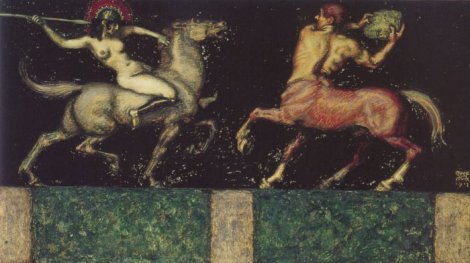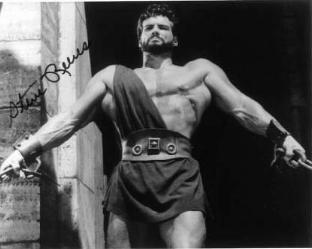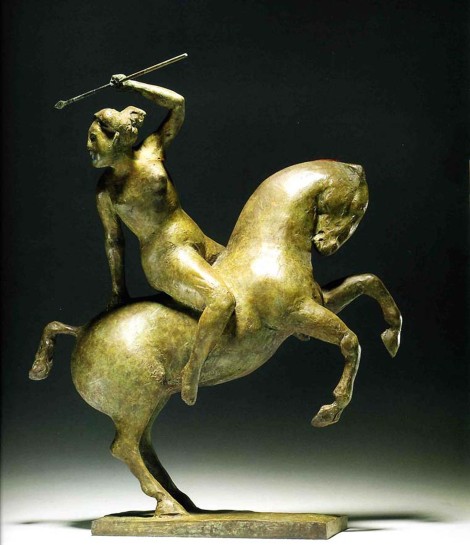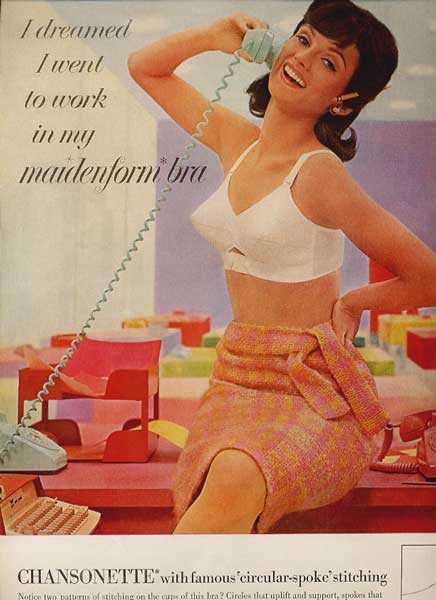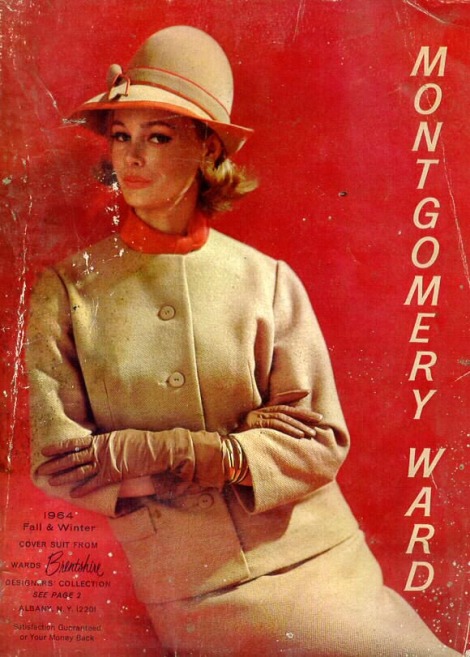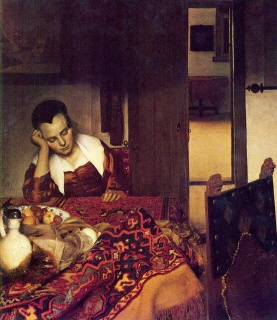Sometimes I think I read too much noir fiction for my own good. It’s grim, focusing on the baser aspects of human nature. Yet much of the stuff is so well-written that it transcends its tawdriness with aesthetic beauty. I just love to read good writing…or maybe I specifically like to read good writing about bad people, I dunno…
Last night I finished reading Harry Whittington’s Fires That Destroy, a 1951 novel that was reprinted in 1988 by Black Lizard Books, a publisher which got the whole noir paperback revival going over two decades ago…

This is the edition I read. An eye-catching cover in a quiet, moody way...
It’s the story of a lonely, homely woman named Bernice Harper who wants to be treated like the beautiful women she sees in the office where she works, the women who get the promotions, the attention, the fawning of handsome males mostly because they know how to use their looks and flirtation skills to get ahead. Bernice gets promoted to work for an impressive man, too, who wants her sexually as well as for her secretarial skills; but she feels humiliated and repelled by his interest in her because he’s blind…she yearns for a man who can see her and desire her on that basis.

This is an edition of the book from the later 1950s, early 1960s, I'm not sure exactly when. Moody photo, but bland...doesn't capture the intensity of the story.
Bernice loathes her boss, hates herself, and when she discovers that he’s hidden away over twenty thousand dollars in cash (a lot of money in 1951), she decides that dough will be her ticket to the life she desires. And so, on the opening page of the novel, she’s just pushed her blind employer down a stairway to his death…
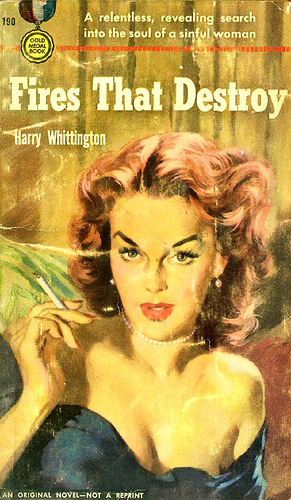
This is the best cover of all, I presume the first edition. This isn't really what Bernice looks like, but it is what she WANTS to look like...and so it works.
Bernice gets away with murder, but her desire to have a movie-starrish-looking man in her life leads to, as we say in our era, “foolish choices.” She meets a guy who is very bad for her, and starts on a spiral of nightmare that leads Bernice to her just desserts as a murderess.
But Whittington (1915-1990) was such a good writer that you feel sadness and pity for Bernice, even though she is a killer. Her desire to be adored, to be worshipped for what she is not, is pathetic but all too human. And in the end, in one of those great ironic twists, she manages to get what she wants even as she loses everything. I’m not giving anything away here—if you know noir, you know that’s how many of these books end, with the most bitter of twists that prove the wisdom of the old adage, “Be careful what you wish for; you might get it.” Although Bernice seems strangely content as she stares at the entrance to hell…
There is much that is evocative of the 50s in this book, as Bernice readily turns over the control of her life (and some of her ill-gotten money) to a worthless dirtbag whose only “virtue” is that he is physically the embodiment of all her erotic dreams. He tells her he’s going to be the “boss” in their relationship, and she’s ready to acquiese as a good 50s gal was supposedly required to do.
Awhile back, I read another book by Whittington called The Devil Wears Wings, and it was a winner too. The guy really cranked some exciting stories. Check out this link for an amazing Flickr site that shows the covers of his many novels; it’s where I found these examples of the cover art for Fires That Destroy.
The book was so immediate and emotional that it seemed as if it were really happening in front of me. What a writer was Harry Whittington! The edition I read also has a great essay he wrote about his life as a writer entitled, “I Remember It Well”—and you can find it online here. It has some terrific advice about fiction-writing, too. And Harry Whittington truly practiced what he preached!

This cover, for another of Whittington's books, best captures the sad and seedy atmosphere between Bernice and the man who leads her to HELL!























